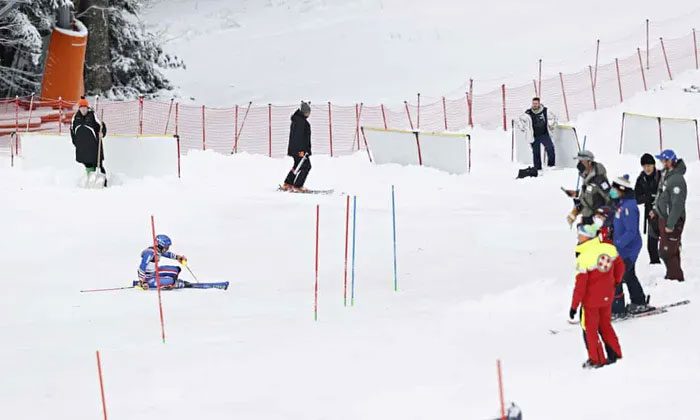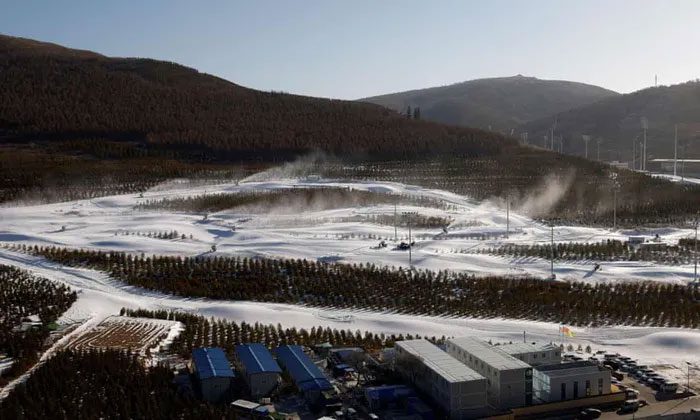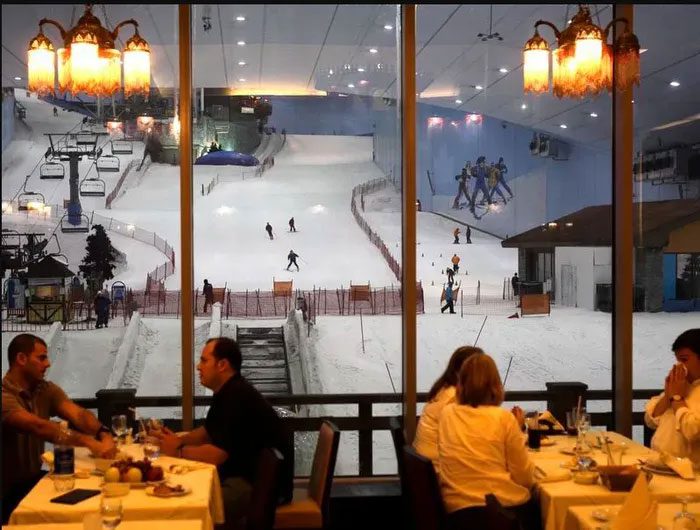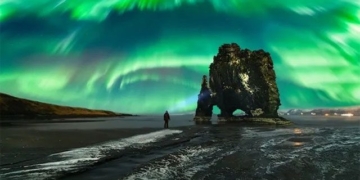Global warming means that finding suitable locations to host future Winter Olympics will become increasingly challenging. Indoor competitions may become a viable option.
By the 2080s, only one city (Sapporo, Japan) out of the 21 locations that have previously hosted the Winter Olympics will still be suitable for this event. This prediction comes from a study by the University of Waterloo, assuming global greenhouse gas emissions remain at current levels.
Six cities are classified as “moderately stable,” while 14 cities are deemed “unreliable” — meaning they cannot meet the snow and safety conditions required for athletes.
Even with significant reductions in emissions, in the Alps, only Albertville — at an elevation of 2,100 meters above sea level — remains a reliable location (among three categories: reliable, moderately stable, and unreliable) to host the Winter Olympics by the middle of this century. The Alps have hosted many Winter Olympics, including the first in 1924.
Climate Indicators
Researchers conducted a survey involving 339 elite athletes and coaches to identify four climate indicators that help predict conditions that undermine fairness and safety in snow sports. The indicators include: unacceptable high or low temperatures, rain, wet snow, and low natural snow coverage.
The study shows that the frequency of these climate indicators has increased over the past 50 years at former Winter Olympic venues, and this trend is likely to continue.
“No sport can escape the impacts of climate change. Achieving the goals of the Paris Agreement on climate change is crucial to ensure that snow sports continue to exist in the form we see today, as well as to ensure suitable venues for hosting Winter Olympics around the world,” said Daniel Scott, the lead researcher.
Adverse climate conditions negatively affect sporting events. This was evident at the FIS Alpine World Ski Championships in Zagreb, Croatia, held in January. High temperatures and a lack of snow forced organizers to cancel the men’s slalom event after just 19 competitors had raced. Among them, French Olympic bronze medalist Victor Muffat-Jeandet sustained an ankle injury.

Victor Muffat-Jeandet competing at the FIS Alpine World Ski Championships in Zagreb, Croatia on January 5. (Photo: Anze Malovrh/Agence Zoom).
Similarly, poor weather conditions during the women’s slalom event reportedly provided a significant advantage to athletes who raced earlier. The course deteriorated after each run. Petra Vlhová, the first competitor, won the event, with only 22 out of 60 participants completing their runs.
Temperatures recorded at the Winter Olympics have steadily increased. From an average of 0.4 degrees Celsius between the 1920s and 1950s, it rose to 3.1 degrees Celsius from the 1960s to 1990s, and 6.3 degrees Celsius in the 21st century. This has forced Olympic host cities to take unprecedented measures to ensure the Games are successful.
In 2010, Vancouver used helicopters to transport snow for the Olympics. In 2014, Sochi — the warmest city to host a Winter Olympics — had to stockpile tons of snow from the previous winter for emergency use.
The Winter Olympics in Beijing are also facing environmental concerns. Events will rely almost entirely on artificial snow. The snow-making process is estimated to require more than 185 million liters of water, putting significant pressure on the local water supply.

Snow guns in operation preparing for the Beijing Olympics in Zhangjiakou, Hebei Province, China on December 21, 2021. (Photo: Carlos García Rawlins/Reuters).
The Future of Snow Sports
Lesley McKenna, a three-time Olympic skier representing Great Britain, has witnessed significant changes over the past 30 years. “The changes are really concerning on many levels,” she said. Weather has become increasingly unpredictable compared to when she began her career, making it necessary for plans to be more flexible to find good training locations. According to her, things are gradually becoming more limited and resource-intensive.
Rosie Brennan, a cross-country skier on the U.S. Olympic team, told NPR that global warming means winter sports must rely more on artificial snow. However, “artificial snow is not like natural snow. It’s much harder, freezes faster, and the sliding speed on artificial snow is also faster,” which makes athletes more prone to injuries.

Athlete Rosie Brennan competing in Dobbiaco (Toblach), Italy on January 5, 2021. (Photo: Alessandro Trovati/AP).
Sören Ronge, an activist with Protect Our Winters Europe, told the Guardian: “If we don’t take action to mitigate climate change, many regions will have to say goodbye to winter sports in the long run. Ski resorts located at lower altitudes will feel this first, and many resorts have already been forced to close.”
There may come a time when outdoor events must move indoors or be held at different times of the year to adapt to the warming climate, Scott noted.
Some warmer countries have built indoor ski resorts. Dubai was the first city in the Middle East to open an indoor ski resort and has won the title of the best indoor ski resort in the world for six consecutive years.
However, if this happens on a large scale, Brennan says the main reason she loves skiing will be lost. “I love being on the mountain, I love being in nature. I love being alone on the trail, feeling my own breath. And those things can’t happen when you’re indoors.”

Diners enjoying a meal at a Lebanese restaurant overlooking the indoor ski resort in Dubai, United Arab Emirates in 2012. (Photo: Kamran Jebreili/AP).
Several recommendations have been made for future Olympics to be more sustainable.
For example, reducing the frequency of the Olympics and selecting one or a few cities to host the Games in rotation to reuse existing infrastructure. Additionally, reducing the number of events and athletes participating in each Olympic Games, as well as limiting visitor numbers to reduce emissions from transportation.
However, according to Sven Daniel Wolfe from the University of Lausanne, the opportunity for a country to showcase its status on the world stage is very valuable, and countries are unlikely to pass up this opportunity.



















































